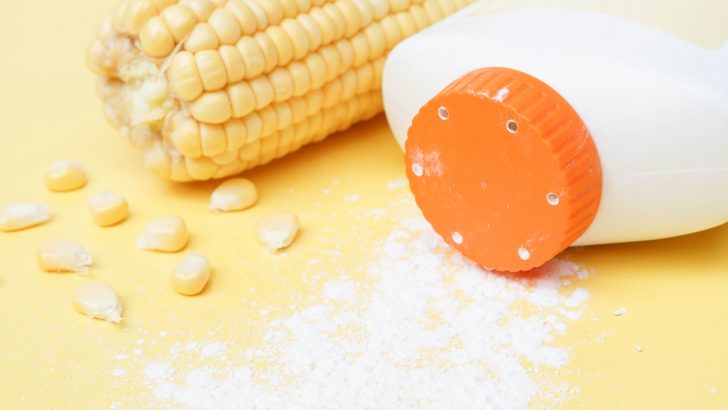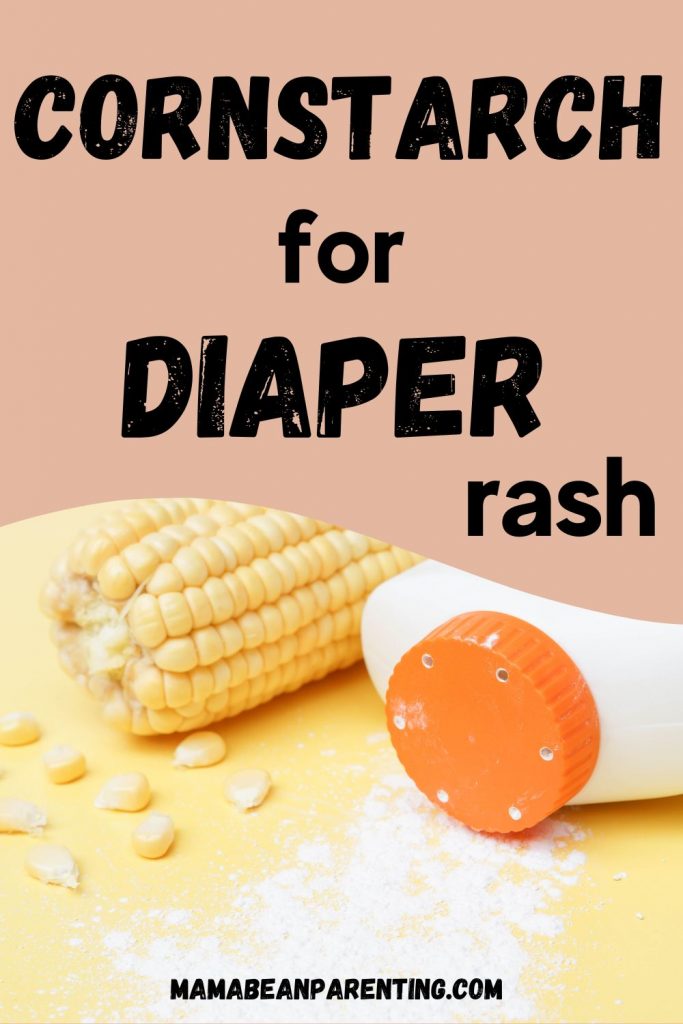Cornstarch for diaper rash seems like a great natural replacement for baby powder and other diaper rash products.
As a responsible mom, you still want to check. You want to make sure that cornstarch is helpful. You want to know the facts. I always like when moms are interested to learn useful things.
Diaper rash affects every baby at some point, and in some cases, it can become very bad. Since you’re a caring mother, you want to help your little one.
A diaper rash is often painful, and it can cause further complications.
Some babies always have diaper rash, and sometimes regular baby products for rash don’t work. Sometimes they make everything worse.
We learned that many home remedies are effective, and now is the time to find out if is cornstarch good for diaper rash.
Is Cornstarch Good For Diaper Rash

Well, it’s not recommended to use cornstarch for diaper rash. According to some medical studies, cornstarch for diaper rash is a bad choice because it could worsen existing yeast infections.
Many studies also show baby talcum powder contains harmful ingredients like talc. So, some baby powders are actually made from cornstarch because cornstarch is less harmful.
When you compare regular baby powder with cornstarch, cornstarch is a safer option. But none of these two diaper rash remedies are completely safe for the diaper area.
Cornstarch for diaper rash is a safer option than talc-based baby powder, but it can cause some complications if the baby has a yeast infection.
If your baby has a diaper rash and you’re used to using some sort of powder to treat it, the best thing to do is to find another option such as coconut oil. I will write about those later in the text.
What is Diaper Rash and How to Avoid it
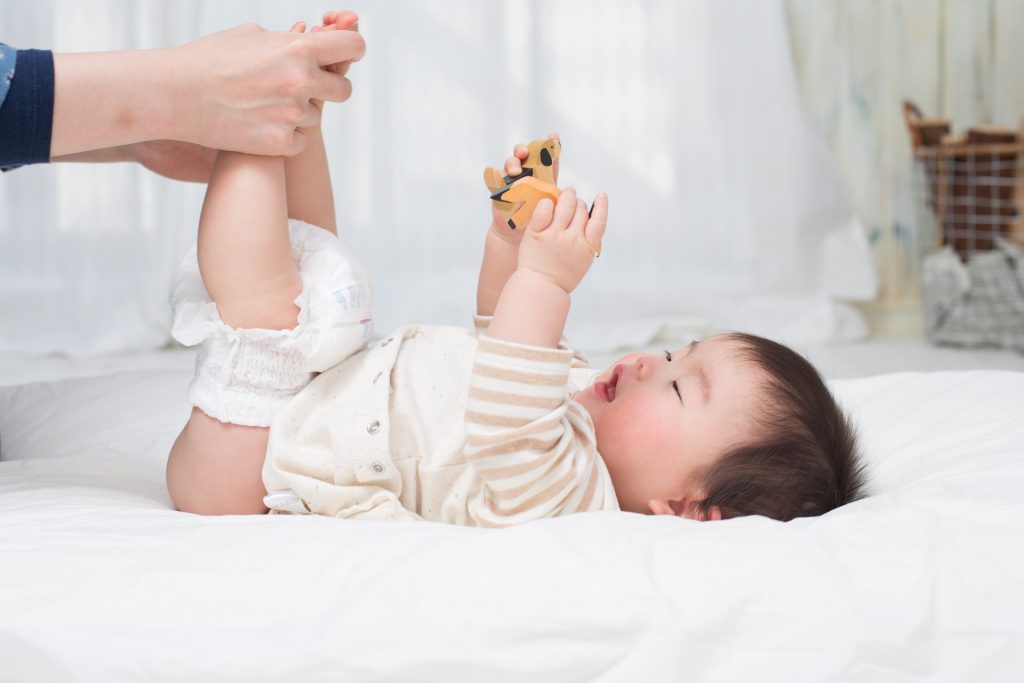
Cornstarch for diaper rash is not the best option. Maybe you’ve used it before, and it worked great, but it’s better to consider other diaper rash treatments.
Cornstarch and baby powder are great for keeping the area dry. They’re used to prevent chaffing, and they soak up excess moisture.
Many adults use baby powder and cornstarch too. You might be wondering why you should look for something else to treat your baby’s diaper rash.
Well, there are two main reasons to find another remedy for this condition.
The first reason is the fact that baby powder and cornstarch for diaper rash are not recommended by health professionals.
The second reason is that there are better ways and better remedies for treating diaper rash.
Changing Diapers Often
Every mom will change the baby’s diaper as soon as she realizes that the baby has peed or pooped.
But, if your baby is suffering from diaper rash, you should change it every 1.5-2 hours, even if it is clean.
Moisture and lack of air can only worsen your baby’s diaper rash, which happens when your baby is wearing diapers. To prevent that, frequent diaper change is essential.
Keep The Area Clean And Dry
Your baby’s diaper area can’t be clean and dry all the time, but it should be like that most of the time.
Avoid using wet wipes for cleaning this area. The best thing to do would be to shower the baby or to use a cotton cloth and warm water for cleaning.
Some high-quality wet wipes are on the market, but warm water and mild soap without detergents are much better when your baby has a diaper rash.
When you’re done cleaning, you should pat dry the area. Most parents do this, and then they put baby powder or cornstarch. I suggest avoiding this last step.
Clean and dry skin should be your goal when fighting diaper rash.
Avoid Harsh Products
Diaper rash means that your baby’s skin is damaged and irritated. If you use products that are too harsh, you will worsen the situation.
When choosing products for diaper rash, try to choose natural, high-quality products. There are also cortisone creams and ointments that most doctors prescribe for diaper rash.
Hydrocortisone creams are effective but can’t be used for more than 7 days. Additionally, they shouldn’t be used often. If you do that, you could permanently damage the skin.
Choose mild baby soaps and shampoos. Wash the baby’s clothes with unscented, gentle detergents, and avoid fabric softeners.
So, the best solution for a baby that has a diaper rash on a regular basis is to avoid harsh chemicals.
Natural options and good hygiene are the way to go.
Some people use baby oil for diaper rash, but it’s ineffective. Baby oil should be used to prevent the baby rash, not to treat it.
If you’re breastfeeding, breast milk lotion would be very helpful for this problem.
Let The Area Breathe
I know that your baby s is wearing a diaper for a reason, but if you’re dealing with stubborn diaper rash, letting the area breathe is a must.
This will help the skin heal. Remove your baby’s diaper, bathe the baby, and wait for an hour or two. Your baby’s skin will thank you.
Of course, your baby will probably pee or poop, so protect the surface where the baby is.
Choose The Right Diapers
Changing diapers often is a must when your baby has a diaper rash, but choosing the right diapers is also important.
Find high-quality diapers and make sure to choose the right size. If the diaper is too big or too small, the baby’s rash won’t go away anytime soon.
If the baby has extremely sensitive skin, think about cloth diapers. They’re much healthier for your baby.
In the past, people only used cloth diapers, and problems with skin and diaper rashes weren’t so common at all.
Cons and Pros of Using Cornstarch for Diaper Rash
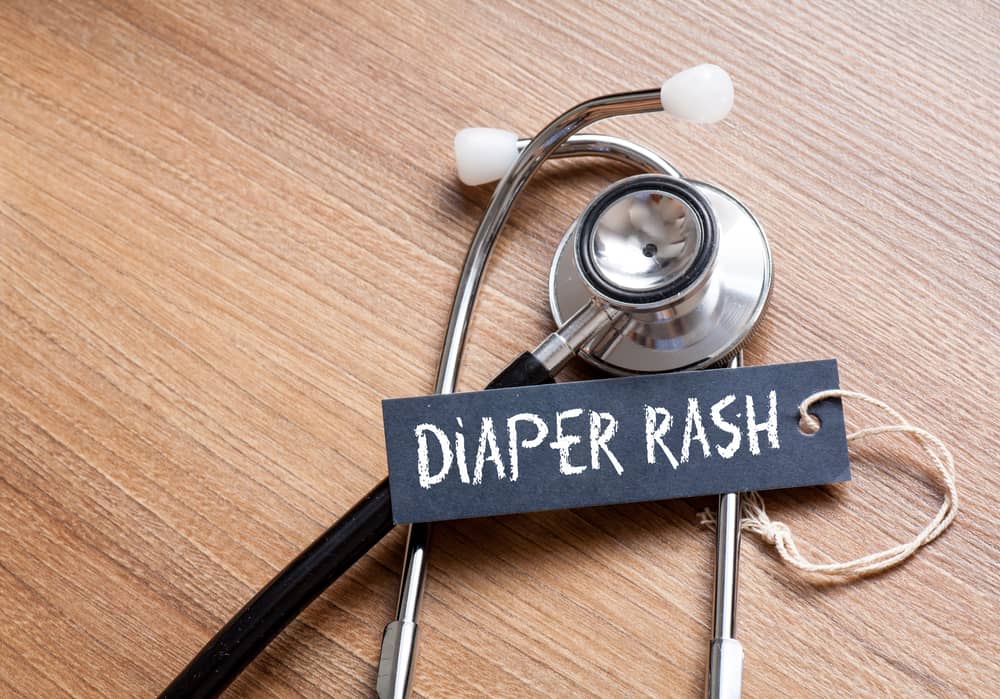
As a mother, I understand how important it is to find the best methods for caring for our little ones. One standard household remedy for diaper rash that many moms consider is cornstarch.
Let’s take a look at the pros and cons of using cornstarch for diaper rash:
Pros:
- Maintains baby dry: Cornstarch is excellent at absorbing moisture, which can help preserve the diaper space dry and stop irritation.
- Mild on baby’s skin: I consistently worry about using harsh chemicals on my baby’s tender skin. Thankfully, cornstarch is known for being gentle and appropriate for sensitive skin.
- Natural option: It’s optimistic to know that cornstarch is a natural choice without any added chemicals or additives that could potentially provoke irritation.
- Budget-Friendly: As a mum, I’m always looking for cost-effective answers. Cornstarch is fairly inexpensive compared to some diaper rash lotions, which is a definite plus.
Cons:
- Might not heal rashes fully: While cornstarch is fine at absorbing dampness, it might not have the same recovery effects as other medicated lotions that have zinc oxide or active ingredients.
- Watch for fungal growth: One thing to be aware of is that cornstarch’s moisture-absorbing quality can develop a damp climate where fungus might expand, particularly if the diaper isn’t changed regularly.
- The application can be tricky: I’ve found that spreading cornstarch evenly can be a bit chaotic, and it might clump up or leave some residue on my baby’s skin.
- Not suitable for all rashes: Remember that cornstarch may not be the most suitable solution for rashes caused by factors other than moisture, such as allergies or bacterial infections.
Using cornstarch for diaper rash can have benefits, like keeping the area dry and being gentle on the baby’s skin. However, it might not work for all types of rashes, and we should be mindful of the potential for fungal growth.
As always, it’s a good idea to consult with a pediatrician or do a small patch test before trying any new remedy on our little ones. Their well-being is what matters most!
Cornstarch Diaper Rash Treatment: Safe Alternatives
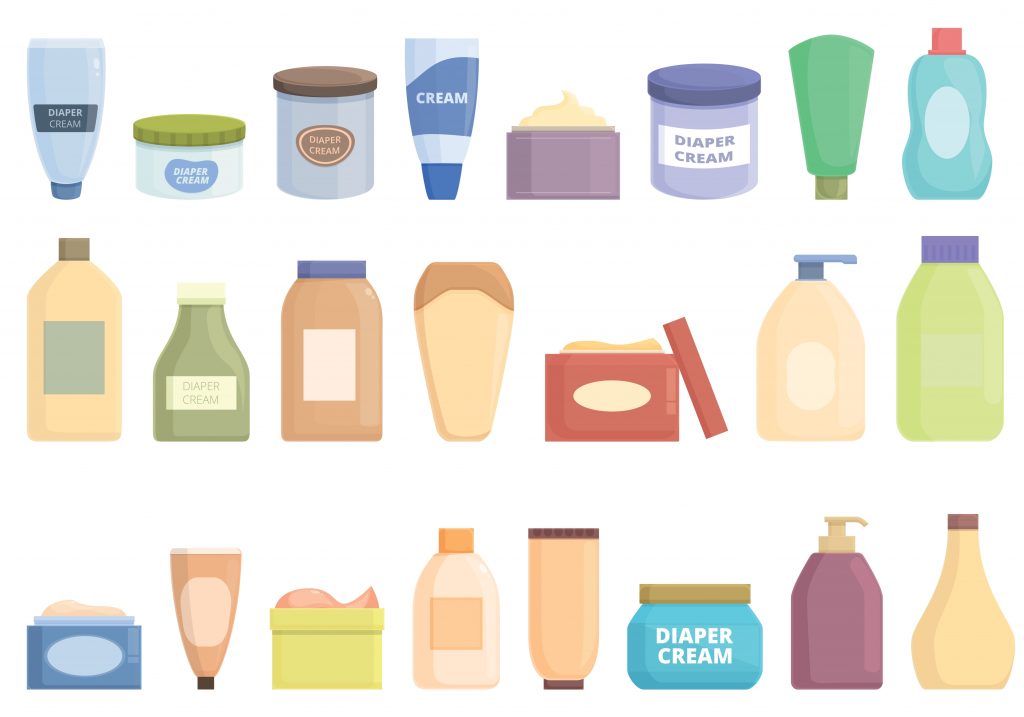
Parents have frequently used corn starch as a natural cure for diaper rash, but it is critical to understand the hazards associated with its use.
As a consequence, cautious parents may wish to look into safer options before turning to corn starch as a therapy choice.
Fortunately, there are various safe and efficient remedies available, such as petroleum jelly, zinc oxide, coconut oil, aloe vera, oatmeal, and calendula.
As a matter of fact, I will give you a few safe recipes that worked for many moms out there including me:
Recipe 1: Baking Soda Cornstarch Bath
Ingredients:
- 2 tsp baking soda
- 2 tsp cornstarch
- 2 tsp warm water
- 1 tub
How to make:
Combine 2 teaspoons baking soda and 2 teaspoons cornflour in the baby tub or sink. Whisk together the baking soda, cornstarch, and water using your hands. The water for your baby’s bath is now ready.
How to apply:
Keep the newborn in the water for 10 minutes, making sure the bottom is completely immersed. Remove him from the water and carefully wipe away the water with a cotton cloth. Apply this cure at least twice a day.
Recipe 2: Petroleum Jelly and Cornstarch for Diaper Rash
Ingredients:
- 1 teaspoon petroleum jelly
- 1 teaspoon cornflour
How to make:
Fill a clean basin halfway with petroleum jelly. Now, using a spoon, stir in the cornstarch.
Your diaper rash cream is now ready to use.
How to apply:
Clean your baby’s bottom with a clean cloth after soaking it in hot water and squeezing it out. Using a soft towel, pat your baby’s skin dry. Apply the homemade cream evenly on your baby’s bum.
Cornstarch For Skincare
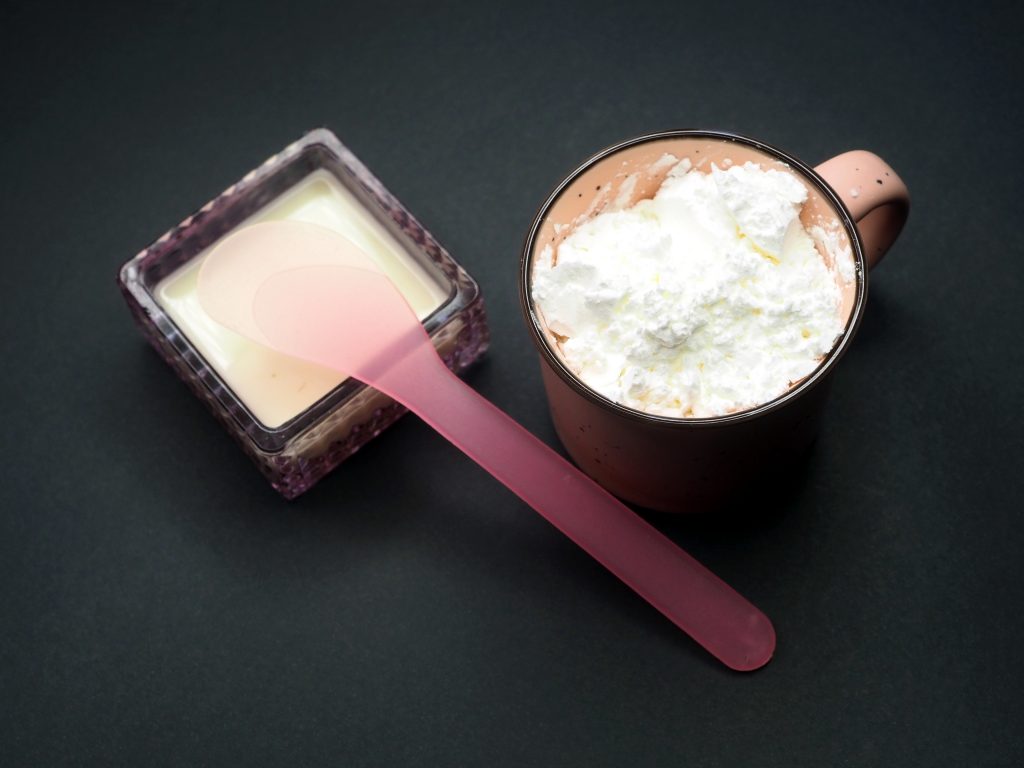
Cornstarch for diaper rash is a popular home remedy, even though it’s not the safest option.
There are other uses of cornstarch. For example, some people use it as a natural dry shampoo. Many pregnant women are using cornstarch as a pregnancy-safe dry shampoo.
Some people use cornstarch as a face mask. They simply mix the cornstarch with milk and apply it to the skin.
Cornstarch can also be mixed with water and used as a body peeling. Some women use cornstarch instead of setting powder.
My favorite use of cornstarch is for waxing or dry shaving.
If you like to wax at home or you have an electric shaver, cornstarch is a great trick to keep the skin dry while removing the hair.
Sweat and most are a problem for a good wax and electric shaving; putting cornstarch on your skin will make everything easier.
It’s also great for men who like to cut their hair at home with a clipper. Putting cornstarch on the neck and forehead will prevent hairs from sticking to the skin.
Cornstarch Household Uses
Cornstarch is advised as a remedy for diaper rashes and skin conditions, but it’s also great for other purposes.
If you have to untie some stubborn knots, cornstarch might help with this. Just pour the cornstarch over the knots, and they should untie easily.
Another great use of cornstarch is for stain removal. If you have a greasy stain from oil or something greasy, just pour the cornstarch over the stain, and wait for 15-20 minutes.
Cornstarch will soak up the grease, and then you can regularly wash or clean the item. Just ensure the item is dry when you pour cornstarch over it.
Many people use baking soda to refresh their carpets. You can use cornstarch if you don’t have baking soda.
Sprinkle cornstarch on your carpet, let it sit for at least 30 minutes, and then vacuum it. You could also do this with couches and beds.
Cornstarch mixed with water is great for polishing silverware. Just make the paste, and use a cloth to rub it all over your silverware. When you’re finished, rinse everything off.
Cornstarch for Diaper Rash – Final Thoughts
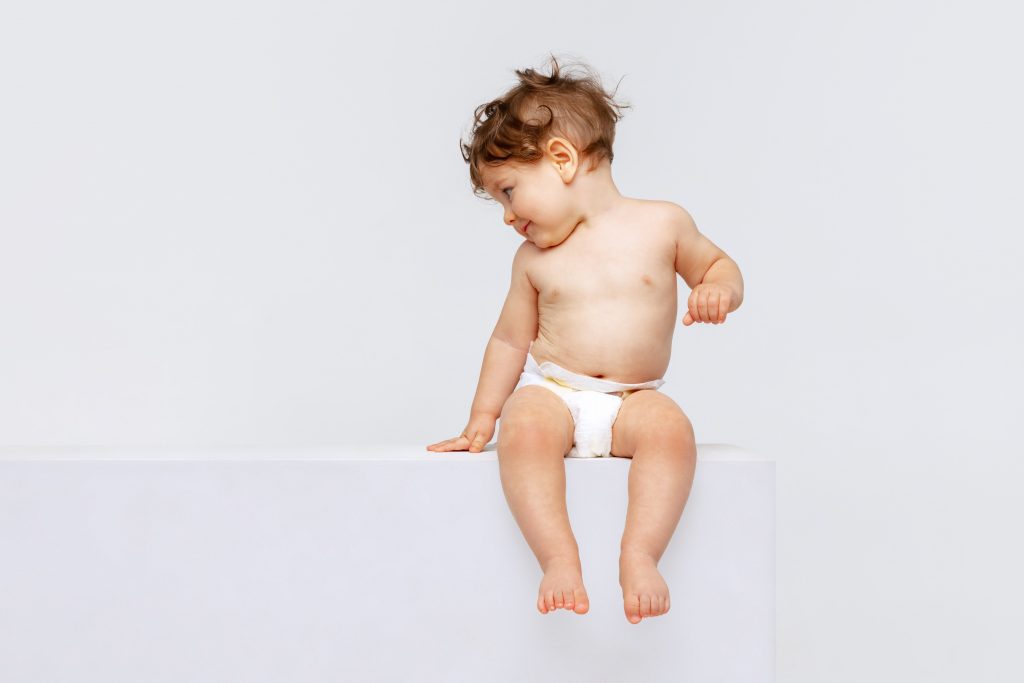
Now that you know using cornstarch for diaper rash is not the best thing to do, it’s time to do some mom research. Cornstarch is used for many other things and is truly a multi-purpose product.
You should try finding a good product to help your child and remove problems connected to the diaper area.
Every child is different, and some things won’t work for your child. Sometimes it takes time and effort to find the perfect diaper rash remedy.
Besides good products, being gentle and caring for the baby’s hygiene is also important.
When it comes to diaper rash, it’s essential to take it seriously. Many people look at it as something normal. It’s common, but I shouldn’t be labeled as normal.
Your baby feels uncomfortable, and diaper rashes can cause other skin problems too. Remember, babies have sensitive skin.
Hi all, I am Sidney, an accountant, a hobbyist photographer, and a mother to two sweet girls who are my motivation. I love sharing the tips and tricks I gained all these years I’ve been a mother. I hope it will help you!

